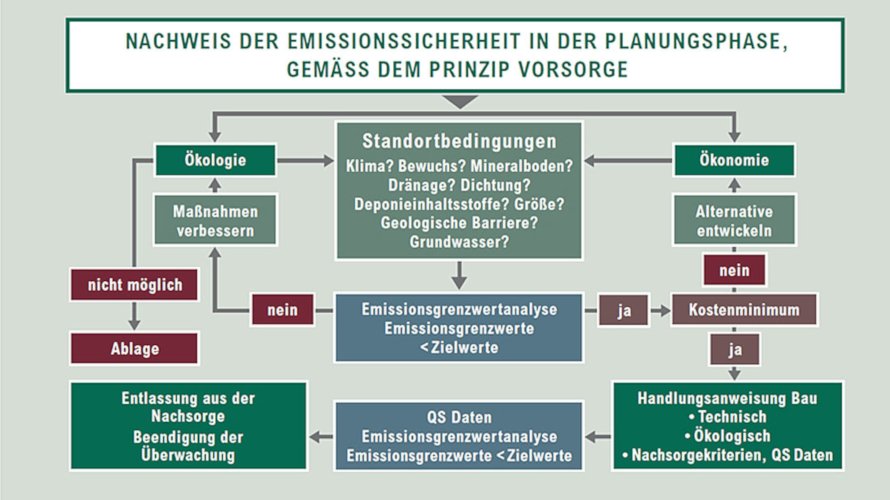PROTECT SOIL AND GROUNDWATER LONG-TERM – WITH THE FINSTERWALDER EMISSION LIMIT VALUES ANALYSIS
With the Finsterwalder emission limit value analysis, we can examine and evaluate on a uniform basis every landfill or earthworks, from which substances can reach the soil and groundwater via the water path. In doing so, we take equal account of the ecological and economic targets.
By applying the emission limit analysis, we can assess the current state of a site and
make a reliable statement about the LIMITS OF FUTURE DEVELOPMENT of groundwater pollution.
This will give you a decision basis for the further procedure.
We can compare and evaluate the security systems offered on the market on a consistent basis. As a result, the emission limit value analysis, we provide mathematical IMPACT PROOF for any measure or any location that the pollution of groundwater will be permanently lower than the official targets.

Natural laws:
The requirements for the verification of emissions safety are high. In contrast to the construction industry, the risks from heterogeneous sources can not be rated safety factors to a state of use because the stage for a heterogeneous source of the “safety factors” not a fixed quantity. They are dependent on the local conditions, i. the location in correlation with the safeguards and the period of use. We take account of this fact by taking account of the data dispersion around an average of all the input data used for the emission limit value analysis. The more precisely the input data (including climate data, characteristics of the subsoil, data on the aquifer, data on long-term surface use, etc.) are explored, the smaller the spread of the calculation results. The result for each ingredient is, according to the probability calculation, an emission field in which the emissions can occur. The upper limit describes the maximum values (emission limit values), the lower the minimum values and a line in the diagram the area with the highest probability. The limit states do not have to be reached in practice, but they are the absolute benchmark for the location-based assessment. This means that it is already known in the planning phase which emissions are to be expected in the worst case when the hedging measure is taken. If these emission limit values lie below the tolerated emissions for the location, no further follow-up care is required (= long-term observation).



